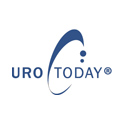PURPOSE:Prospective evaluation of sexual outcomes after prostate brachytherapy with iodine-125 seeds as monotherapy at a tertiary cancer care center.
METHODS AND MATERIALS: Subjects were 129 men with prostate cancer with I-125 seed implants (prescribed dose, 145 Gy) without supplemental hormonal or external beam radiation therapy. Sexual function, potency, and bother were prospectively assessed at baseline and at 1, 4, 8, and 12 months using validated quality-of-life self-assessment surveys. Postimplant dosimetry values, including dose to 10% of the penile bulb (D10), D20, D33, D50, D75, D90, and penile volume receiving 100% of the prescribed dose (V100) were calculated.
RESULTS: At baseline, 56% of patients recorded having optimal erections; at 1 year, 62% of patients with baseline erectile function maintained optimal potency, 58% of whom with medically prescribed sexual aids or drugs. Variables associated with pretreatment-to-posttreatment decline in potency were time after implant (p = 0.04) and age (p = 0.01). Decline in urinary function may have been related to decline in potency. At 1 year, 69% of potent patients younger than 70 years maintained optimal potency, whereas 31% of patients older than 70 maintained optimal potency (p = 0.02). Diabetes was related to a decline in potency (p = 0.05), but neither smoking nor hypertension were. For patients with optimal potency at baseline, mean sexual bother scores had declined significantly at 1 year (p < 0.01). Sexual potency, sexual function, and sexual bother scores failed to correlate with any dosimetric variable tested.
CONCLUSIONS: Erections firm enough for intercourse can be achieved at 1 year after treatment, but most men will require medical aids to optimize potency. Although younger men were better able to maintain erections firm enough for intercourse than older men, there was no correlation between potency, sexual function, or sexual bother and penile bulb dosimetry.
Written by:
Whaley JT, Levy LB, Swanson DA, Pugh TJ, Kudchadker RJ, Bruno TL, Frank SJ. Are you the author?
Department of Radiation Oncology, The University of Texas MD Anderson Cancer Center, Houston, TX.
Reference: Int J Radiat Oncol Biol Phys. 2012 Jan 31. Epub ahead of print.
doi: 10.1016/j.ijrobp.2011.11.004
PubMed Abstract
PMID: 22300559



